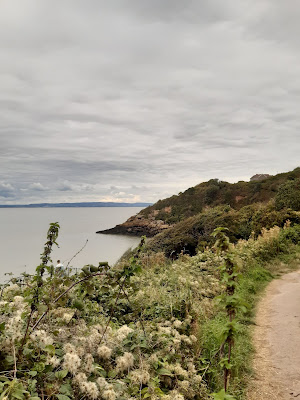Open Doors Day - or Heritage Open Days, as they now seem to be called - have changed, at least in Bristol, and not for the better. Admittedly, the more popular locations have had to be booked in advance for some years, and in our not-really-post-Covid world, arranging these sort of events is certainly more complex than it was, but I was dismayed to see that this year, people wishing to join in had to buy a wristband in advance. Gone the spontaneity of stopping by, deviating from the planned route because somewhere takes your fancy, and going home early when your feet have had enough. Gone, too, the principle of not paying. It feels like something really quite precious has been commercialised, and in commercialising it, made more middle class, more exclusive.
So, I decided to stick to South Gloucestershire venues - only a couple as I only had a couple of hours - and rolled up in a timely fashion at Winterbourne's mediaeval barn, which I'd been keen to see for some years. Built in 1343 just before the Black Death decimated the workforce, the barn was commissioned by Thomas de Bradeston, who is, possibly, implicated in the horrible murder of Edward II at nearby Berkeley Castle. This barn's importance lies in the fact that whereas other surviving great barns were built by monastic estates, Universities or Knights Hospitallers, this one is one of only three recorded that were built by a Lord of the Manor.
If it looks a bit smaller than some of the other great mediaeval barns, that's because only seven of its eleven original bays have survived.
And because it's important to have an idea of these things, it's estimated that as many as 240 oak trees were used to build the roof structure.
Apparently, the circle of stones is where cattle would tread to turn the mills.
The Church of St Michael is literally a stone's throw from the barn, so I decided to make a swift visit before setting out for my next destination. I'd visited before, and was looking forward to reacquainting myself with my favourite surly cherub in the churchyard.
What I'd evidently missed on that previous visit was this precursor of the famous last scene of 'Carrie'.
As I was passing the bell tower, I was invited up for a talk on bell-ringing, which turned out to be long, though of interest too, not least because the bells had been muffled and rung the previous day to mark the death of the Queen. Then I had the anxiety of climbing down the narrow winding steps of the tower, although it turned out to be less alarming than the ascent.
I'm always going to be beguiled by mediaeval wall paintings ...
... but the tomb of Thomas de Bradeston was of extra interest now I was aware of his role in the building of the barn murder of Edward II (allegedly).
The church is of interest to me having been built by William Butterfield, a Gothic Revivial architect and forerunner of the architects of the Arts and Crafts Movement.
After all the trying to get in, I was a bit taken aback by the interior. I think I must have been expecting something more ... well, Gothic, but it's actually pretty plain, and reminded me of my artistically constrained Methodist upbringing. The light fitting in the chancel has an Arts and Crafts vibe to it, though, as do the painted inscriptions on the wall.
By now the bell-ringers were getting ready to ring for the dead Queen and when I saw the bell-ringer from St Michael's advancing across the car park, I thought I'd better scoot off before I got another potted history, so I did. Things to do, places to be in these strange days.








































.jpg)






































